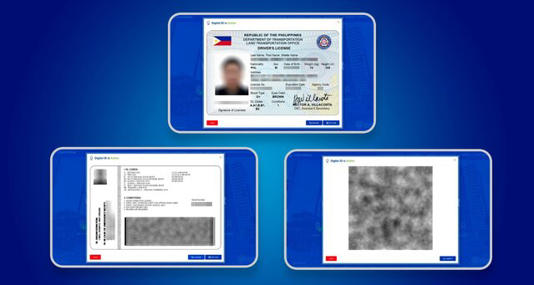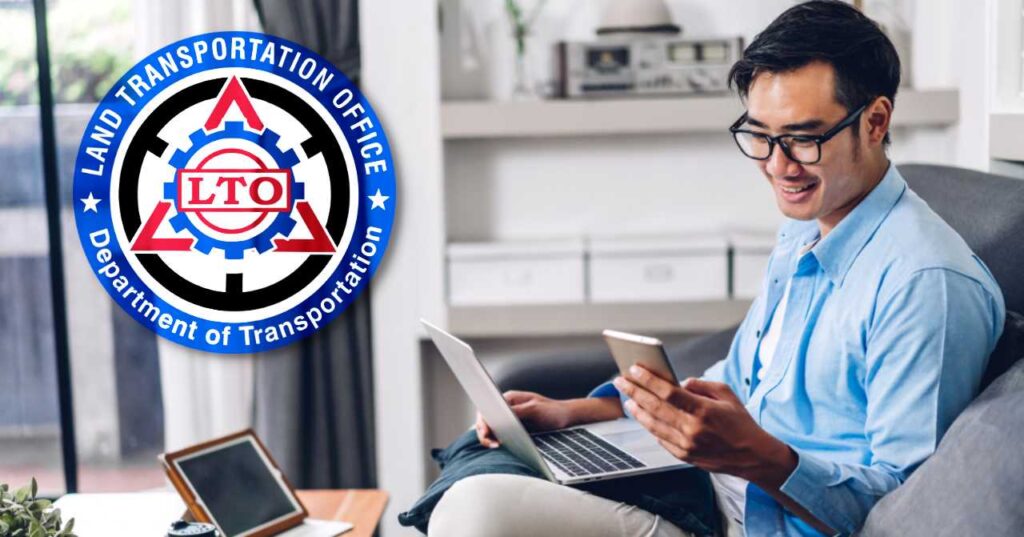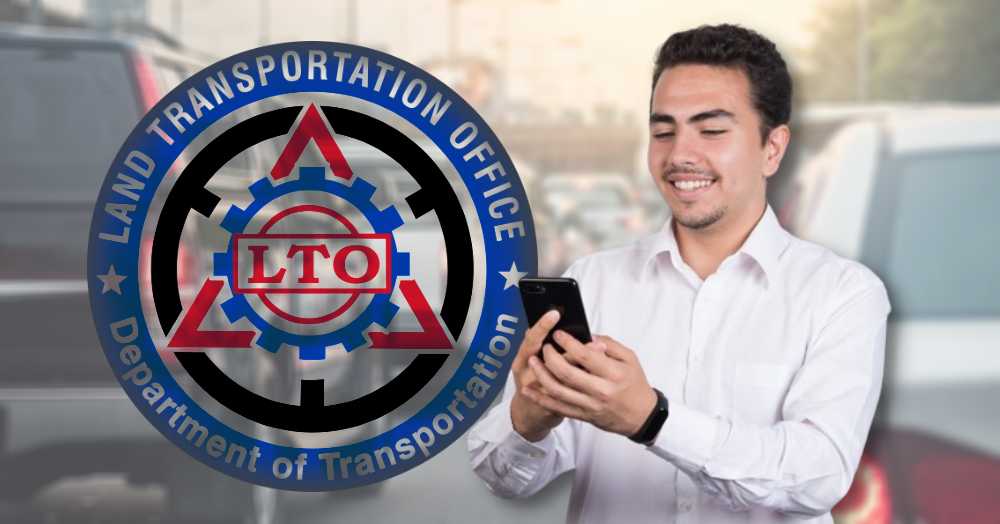After the government has expressed a strong desire to transition to the use of digital documents, it’s no surprise that the Land Transportation Office (LTO) has taken significant strides toward modernizing one of the most crucial credentials for motorists – the driver’s license. The LTO Electronic Driver’s License (LTO EDL) is a groundbreaking initiative that embraces the era of digitization, promising to revolutionize the way we perceive, obtain, and utilize this essential identification document.
With its advanced features and seamless integration into the digital landscape, the LTO EDL aims to enhance security, convenience, and efficiency for drivers across the nation. This progressive leap into the digital realm not only represents a step forward in government services but also signals a commitment to stay at the forefront of technological advancements for the benefit of the Filipino people. Let’s take a look at what this digital document has to offer and how we can obtain one.
In response to shortages of physical cards and to improve services for Filipinos through digitalization, the Land Transportation Office (LTO) has introduced the electronic driver’s license (eDL).
This initiative aligns with the national government’s efforts to enhance digital systems within its agencies, aiming to provide convenient and hassle-free transactions for the public.
With the eDL now available, motorists can experience a more efficient and secure way of obtaining and using their driver’s licenses.
Physical vs. Electronic Driver’s License: What’s the Difference?
When it comes to driver’s licenses, there are some key distinctions between the physical and electronic versions. Let’s explore the dissimilarities to understand which one suits your needs best:
- Format
- Physical License: It is a tangible card that can be readily presented to law enforcement or as a valid ID by simply pulling it out of your wallet.
- Electronic Driver’s License (eDL): Accessible on your mobile device, the eDL offers a digital format, eliminating the need to carry a physical card at all times.
- Convenience
- Physical License: Offers instant accessibility as long as it is on your person.
- Electronic Driver’s License (eDL): Can be accessed on your mobile device, making it a handy backup in case you forget or lose your physical card.
- Privileges and Responsibilities
- Both eDL and physical license holders have identical privileges and responsibilities on the road.
- They must adhere to the same set of rules, regulations, and traffic laws.
- Legal Equivalence
- The eDL holds the same legal validity as the physical card.
- Law enforcement will treat the eDL as equally legitimate, and it can be used as proof of identity when required.
- Penalties and Fines
- Whether you possess the eDL or the physical card, any violations of traffic laws will result in the same fines, fees, and penalties.
- Loss or Misplacement
- Physical License: If lost or left at home, you might face difficulties in proving your driving credentials during checks.
- Electronic Driver’s License (eDL): Offers a backup solution in case of loss or misplacement, ensuring you can still present your digital license.
- Digital Security:
- The eDL is protected by modern encryption and security measures to prevent unauthorized access.
- Physical licenses can also be secured by keeping them safe in your wallet or a designated holder.
EDL Features

- The eDL (Electronic Driver’s License) is a digital version of your physical driver’s license, accessible through a dedicated button on your device.
- The frontside and backside of the eDL can be viewed, providing all the relevant information just like the physical card.
- Look for the “Digital ID is Active” indicator at the top of the eDL, confirming its validity and authenticity.
- The eDL features a QR Code located at the right corner. Scanning this code reveals important details about the motorist’s license status, type, number, expiry date, and LTO Client ID.
- The QR Code serves as a method for law enforcement officers to verify the legitimacy of the eDL during routine checks or traffic stops.
- With the eDL’s digital format, there’s no need to carry a physical card all the time, reducing the risk of misplacing or damaging it.
- The convenience of the eDL allows for easier access during various transactions that require driver’s license verification.
- In case of loss or theft of the physical license, having the eDL as a backup can expedite the process of reporting and obtaining a replacement.
- The eDL’s enhanced security features make it more resistant to counterfeiting or tampering, ensuring the protection of motorists’ identities and licenses.
- Regular updates and improvements to the eDL system are likely to ensure that users have access to the latest features and technologies.
Note: Always make sure to follow your country’s regulations and guidelines when using digital driver’s licenses, and be aware of any specific requirements for presentation to law enforcement officers.
Eligibility
Both current and new holders of driver’s licenses are eligible to utilize the innovative LTO eDL module.
This digital platform opens up new possibilities for drivers, allowing them to benefit from its advanced features and services.
How to Access the LTO eDL
Step 1: Check if you have an LTMS portal account. If you recently obtained or renewed your driver’s license, you should already have one. If not, follow these steps to create an account:
- Visit the official LTO website.
- Look for the “Create Account” or “Register” option and click on it.
- Fill in the required information, such as your full name, date of birth, address, contact details, and a valid email address.
- Create a strong password and confirm it.
- Complete any additional verification steps, if prompted.
- Once done, you will have successfully created your LTMS portal account.
Step 2: After logging into your LTMS portal account, access the dashboard by clicking on the appropriate tab or link.
Step 3: On the dashboard, locate and click on the “Digital ID” option. This will lead you to the electronic version of your driver’s license.
Step 4: In the Digital ID section, you will find an exact digital replica of your driver’s license. You can view the backside of the license by clicking the button situated at the bottom right of the screen, next to the QR Code button.
Congratulations! You have successfully accessed your LTO eDL through the LTMS portal.
Make sure to keep your account credentials safe and use this digital version of your driver’s license whenever necessary. It offers a convenient and secure way to carry your license with you, avoiding the need for a physical card at all times.
Tips When Getting an eDL
- Verify Eligibility: Before applying for an eDL, make sure you meet the eligibility requirements set by the LTO. Typically, both new applicants and current driver’s license holders are qualified to avail of the eDL module.
- Familiarize Yourself with the eDL System: Take some time to explore the LTO’s website or official app to understand how the eDL system works. Familiarize yourself with the features and functionalities of the digital platform to make the most out of your eDL experience.
- Verify Information: After your data is captured in the system, take a moment to review all the information provided on your eDL. Verify that your personal details and other relevant data are correct before finalizing the process.
- Stay Updated: As the eDL system evolves, the LTO may introduce new features or updates. Stay informed about any changes or improvements to maximize the benefits of your eDL.
- Observe Secure Data Practices: When it comes to eDLs (Electronic Driver’s Licenses), ensuring secure data practices is of utmost importance. Since eDLs contain sensitive personal information and serve as a valid form of identification, it is crucial to handle them with care. Users should avoid sharing their eDL information with unauthorized individuals or online platforms that may compromise their data security.
- Always Bring Your Physical Driver’s License with You: While eDLs provide a convenient and digital alternative to physical cards, it is essential to remember that the eDL may not always be universally accepted in all situations. Some establishments, institutions, or authorities might still prefer to see a physical driver’s license as a form of identification.
By following these tips, you can navigate the process of getting an eDL with ease and confidence. Embrace the convenience of the digital era and enjoy a streamlined experience with your Electronic Driver’s License from the Land Transportation Office. Safe driving!
Video: News Report on e-Driver’s License (eDL)
In this short video report, the focus is on the Land Transportation Office’s (LTO) innovative response to the issue of missing driver’s license cards – the e-driver’s license. As a practical and modern alternative, the LTO introduces this digital solution to cater to individuals facing challenges with physical license cards.
The video delves into the benefits and functionalities of the e-driver’s license, showcasing how it addresses the problem of missing cards while also providing additional advantages for motorists.
With a seamless digital system in place, drivers can enjoy a more efficient and convenient experience, making it a significant step towards embracing technology in the realm of driving credentials.
Frequently Asked Questions (FAQs)
1. Do I have to pay to access my eDL?
No, there are no fees to get and access the eDL. However, renewal payments for driver’s licenses will remain as usual.
2. Can I drive without a physical driver’s license?
Yes, with the recent implementation of the eDL, you can drive without carrying a physical driver’s license. Law enforcement officers should accept the eDL as a valid form of authorization and identification to operate a vehicle on the road if the physical copy is not with them.
3. Can I use my LTO eDL when apprehended by enforcers?
Yes, the eDL is considered a legitimate alternative to the physical driver’s license card. Law enforcement and traffic enforcers can accept it as a valid identification of the license owner by scanning the barcode using their handheld device.
4. Can I use screenshots of my LTO digital license?
No, saved pictures or screenshots of the eDL will not be accepted by law enforcement personnel or deputized agents when you’re apprehended. You need to open your LTMS portal and access the eDL in front of the enforcer to ensure its legitimacy.
5. What happens if I fail to present my eDL when apprehended?
Apprehended motorists will need to present the eDL in their LTMS portal account. Those who fail or refuse to present the eDL will be fined for violation of carrying a driver’s license. Similar to a driver’s license card, apprehended motorists will be issued a Temporary Operator’s Permit (TOP) or an Electronic Temporary Operator’s Permit (eTOP), which will be valid for 72 hours from the issuance of TOP. Failure to settle the violation within the prescribed hours will render the TOP invalid, which means the driver will be prohibited from using a vehicle.
6. What happens if I have an existing or unsettled violation on my eDL account?
If you have an existing or unsettled violation, your LTMS account may be suspended until the violation is resolved.
7. Can I use my eDL as a valid ID for non-driving purposes?
While the eDL serves as a valid form of identification for driving purposes and is recognized by law enforcement officers, its acceptance as a general identification document may vary depending on the specific situation and organization. Some establishments or institutions might not be familiar with the eDL format or may have specific policies regarding acceptable identification. It is advisable to carry a government-issued ID or any other widely recognized identification alongside your eDL for non-driving purposes to ensure smooth transactions in various situations.
8. What should I do if I encounter technical issues with my eDL?
In the event of any technical issues with your eDL, such as difficulty accessing the LTMS portal or errors in the eDL data, it is recommended to seek assistance from the Land Transportation Office (LTO) or their designated support channels. The LTO is responsible for the administration and maintenance of the eDL system, and they can provide guidance and support to resolve any technical concerns. Be prepared to provide relevant information about the issue encountered, such as error messages or specific details of the problem, to expedite the troubleshooting process.
Summary
In conclusion, the introduction of the LTO Electronic Driver’s License (LTO EDL) marks a significant milestone in the government’s efforts to embrace digital transformation.
By modernizing the driver’s license system, the LTO aims to provide motorists with an enhanced and efficient identification document that aligns with the demands of the digital era.
The LTO EDL’s advanced features and seamless integration into the digital landscape promise to bring improved security and convenience to drivers across the nation.
Embracing this innovative approach not only represents a positive step in government services but also reflects a dedication to keeping up with technological advancements for the benefit of the Filipino people.
As we move forward, the LTO EDL offers a glimpse into the future of identification documents, and obtaining one will undoubtedly streamline the driving experience for citizens.
READ NEXT: How to Apply for an International Driving Permit (IDP)

